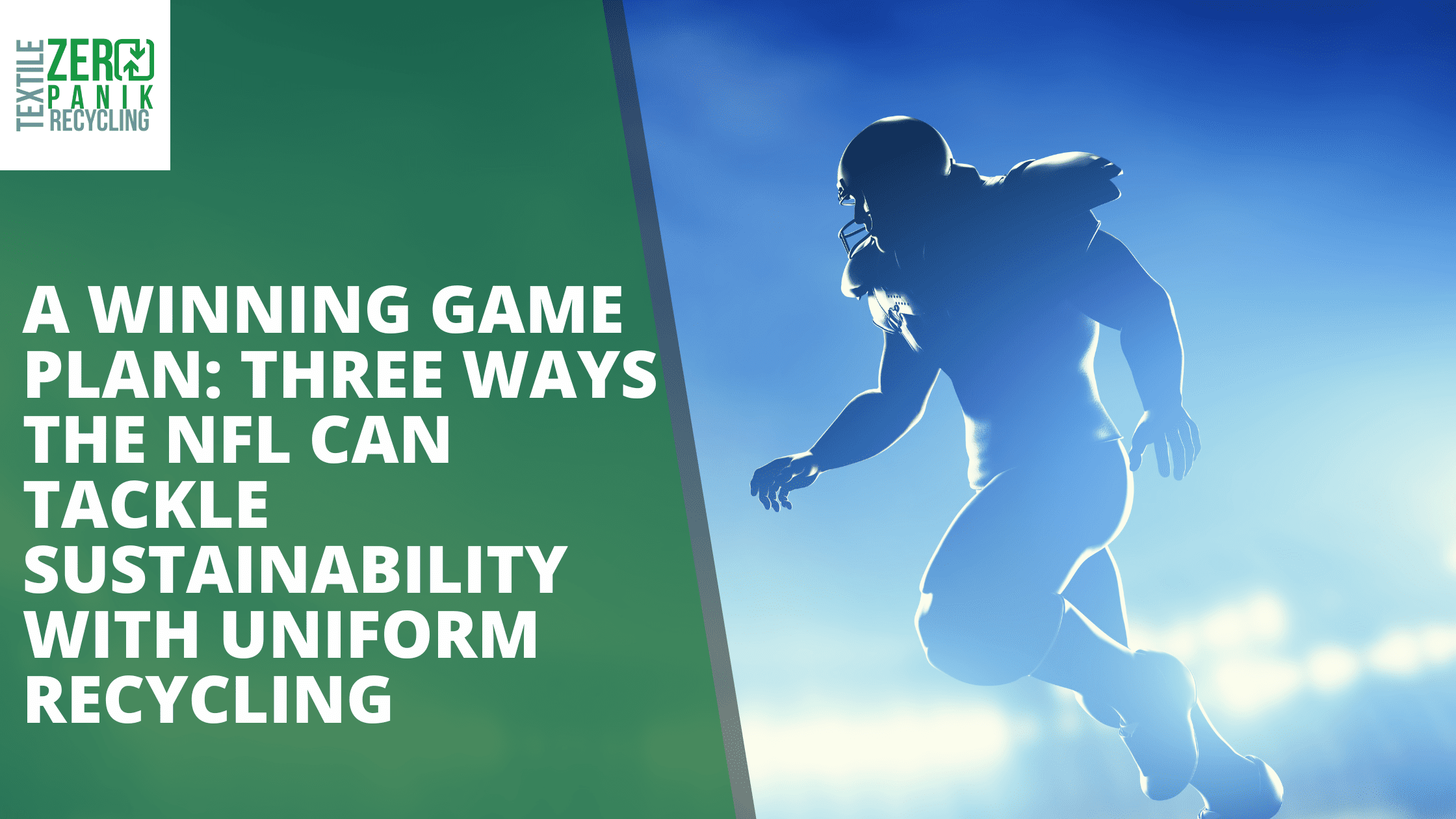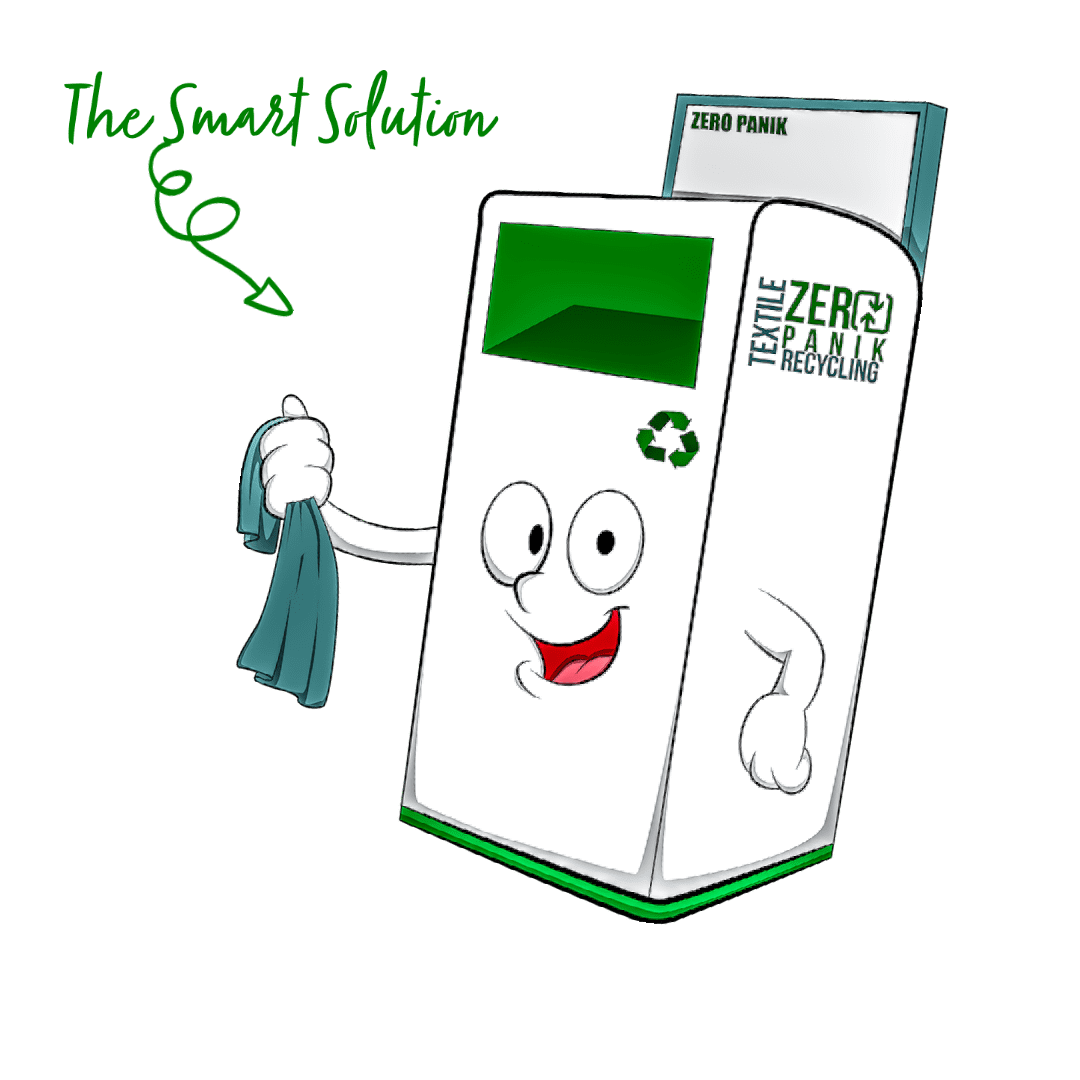
Introduction: Let’s Score a Touchdown for Sustainability!
As the most-watched sporting event in the United States, the Super Bowl commands the attention of millions. Beyond the excitement of the game, the NFL has the power to make a lasting impact on society. With a growing focus on sustainability, the league has the opportunity to tackle environmental issues head-on. One area of opportunity lies in uniform recycling. By implementing a comprehensive textile recycling program, the NFL can create positive change and set an example for other industries. In this blog post, we will explore three ways the NFL can develop a winning game plan for sustainability and make a lasting impact on the environment.
The Environmental Impact of NFL Uniforms: Why Recycling Matters
When it comes to the NFL, we often focus on the incredible athleticism and intense competition. But it’s important to consider the environmental impact of such a massive industry. With millions of fans tuning in to support their favorite teams and players, the demand for NFL merchandise has skyrocketed, including the iconic uniforms worn by players on the field.
Not only would this help protect the environment, but it would also save valuable resources. Textile production is an incredibly resource-intensive process, involving large amounts of water, energy, and chemicals. By recycling uniforms, the NFL can help conserve these resources and reduce the negative impact of their operations.
In addition, implementing a uniform recycling program would set a powerful example for other industries. The NFL has a massive platform and the ability to influence millions of people. By showcasing their commitment to sustainability, they can inspire other sports leagues, organizations, and even individuals to take action.
In the next section, we will explore the potential benefits of implementing a uniform recycling program for the NFL, including the economic advantages and the positive image it can create for the league. Stay tuned for more on how the NFL can develop a winning game plan for sustainability through uniform recycling. Let’s tackle this environmental challenge head-on!
Tackling Sustainability: Three Innovative Ways the NFL Can Make a Difference
As we dive deeper into the topic of uniform recycling, let’s explore three potential strategies that the NFL can implement to make a significant impact on sustainability.
Firstly, the NFL could partner with environmentally conscious textile manufacturers to develop innovative and eco-friendly fabric options for their uniforms. By utilizing sustainable materials such as recycled polyester or organic cotton, the league can not only reduce its carbon footprint but also support the growth of sustainable textile production.
Secondly, the NFL could introduce a rental program for their uniforms. Instead of players owning multiple sets of jerseys, they could borrow uniforms for each game and return them afterward. This would not only promote reuse and reduce textile waste but also offer a unique opportunity for fans to own game-worn jerseys through auctions or lottery systems.
Lastly, the league could establish a closed-loop recycling system by collecting and processing retired jerseys to create new uniforms. By implementing advanced textile recycling technologies, like mechanical and chemical recycling, the NFL can ensure that their uniforms are continually repurposed into new products without compromising performance or quality.
By implementing these innovative strategies, the NFL can position itself as a leader in sustainability within the sports industry. Not only will they be reducing textile waste and conserving resources, but they will also be inspiring fans, players, and other organizations to prioritize environmental responsibility. Together, we can create a brighter, greener future for the NFL and beyond.
Huddle Up: Collaboration and Partnerships for Successful Uniform Recycling Programs
Collaboration and partnerships with various stakeholders are critical for the successful implementation of uniform recycling programs. The NFL has the opportunity to join forces with key players in the textile industry, sustainability organizations, and even other sports leagues to truly make a difference. By working together, we can maximize the impact of our initiatives and create a more sustainable future.
One important partner the NFL can work with is the players themselves. Engaging athletes in sustainability efforts can be a powerful way to raise awareness and promote active participation. By involving players in the design and decision-making processes, they can feel a sense of ownership and pride in their eco-friendly uniforms.
Furthermore, collaboration with textile manufacturers and recycling facilities can accelerate the development and adoption of innovative recycling technologies. By working together to improve the efficiency and scalability of these processes, the NFL can ensure a closed-loop system that is both environmentally friendly and cost-effective.
Additionally, partnering with sustainability organizations and campaigns can help amplify the messaging and reach of the NFL’s sustainability initiatives. By aligning themselves with reputable organizations that share the same values, the league can effectively communicate its commitment to sustainability to a wider audience.
Ultimately, successful uniform recycling programs require a team effort. By fostering collaborations and partnerships, the NFL can leverage the collective expertise and resources necessary to tackle sustainability challenges head-on. Together, we can create a sustainable game plan that not only benefits the environment but also inspires change beyond the world of sports.
Going the Extra Yard: Educating Fans and Players on Sustainable Practices
The success of any sustainability initiative relies heavily on the support and active participation of fans and players. The NFL can take its uniform recycling efforts to the next level by educating both groups on sustainable practices.
To start, the league can leverage its platforms, such as social media and game broadcasts, to raise awareness about the importance of recycling and the impact it has on the environment. By sharing facts, statistics, and success stories, they can educate fans and motivate them to adopt sustainable habits.
In addition, the NFL can collaborate with players to spread the message both on and off the field. Organizing workshops and training sessions focusing on sustainability can empower athletes to become ambassadors for eco-friendly practices. By sharing their personal experiences and leading by example, they can inspire their teammates, fans, and even other sports professionals to make sustainable choices.
Moreover, incorporating sustainability education into youth programs and fan engagement activities can have a long-lasting impact. By teaching young fans about the value of recycling and the importance of environmental stewardship, the NFL can instill these principles in the next generation of players and fans.
By going the extra yard to educate fans and players, the NFL can create a culture of sustainability that extends far beyond the sidelines. With a well-informed and engaged fan base, the league can truly make a difference in tackling sustainability challenges and leading the way toward a greener future.
Winning Together: Leveraging the Power of the NFL to Drive Positive Change
The NFL has a powerful platform that can be used to drive positive change and make a substantial impact on sustainability. By harnessing the collective power of teams, players, and fans, the league can create a winning game plan for a greener future.
By aligning themselves with established sustainability advocates, the league can amplify its message and reach a broader audience. Collaborative efforts can include fundraising campaigns, community events, and educational programs that promote sustainable practices both within and outside the NFL community.
Furthermore, the NFL can encourage teams and players to take individual action to reduce their carbon footprint. By providing resources and incentives for adopting eco-friendly practices, such as implementing recycling programs in stadiums and promoting sustainable transportation options, the league can lead by example and inspire others to follow suit.
Lastly, the NFL can use its annual events, such as the Super Bowl and the draft, as opportunities to showcase sustainable practices to millions of viewers. Implementing green initiatives during these high-profile moments not only sends a powerful message but also sets a precedent for other sports leagues and franchises to follow.
By coming together and embracing sustainability, the NFL can pave the way for a future where sports and environmental responsibility go hand in hand. Together, we can achieve a victory for both the game and the planet.
